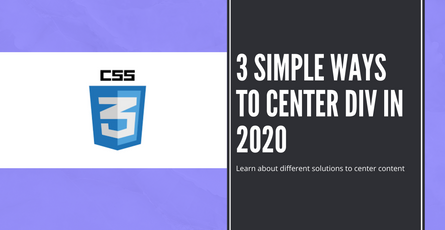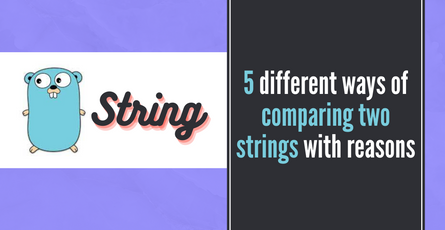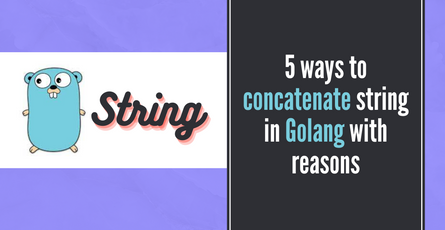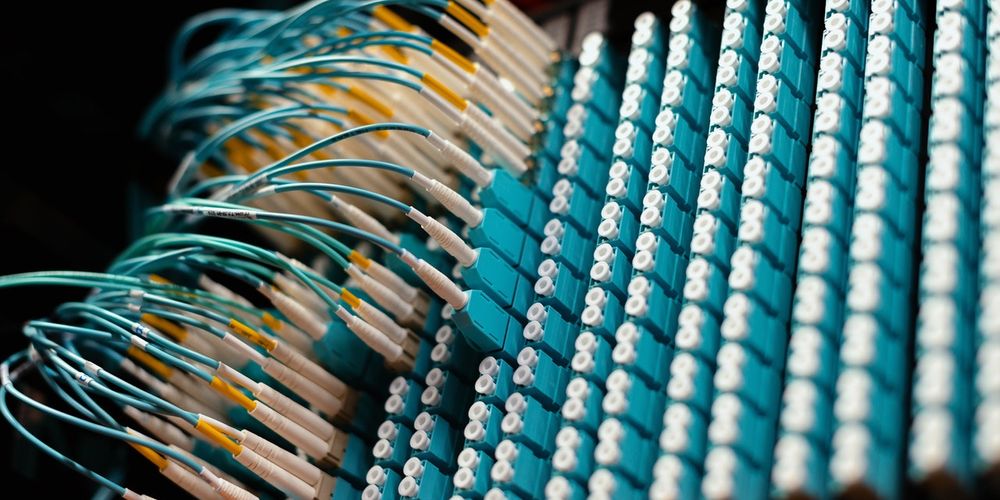
Build Sports Team API with GraphQL - Hasura - Part 2
Learn about one-to-one database relationship by building sports team API-
 Sriram Thiagarajan
Sriram Thiagarajan
- June 18, 2021
Build Sports Team API with GraphQL - Hasura - Part 2
This post is part of a series of post and so if you haven’t read the previous one, please read that and come back and we will wait :)
Objectives of this post
- Introduction
- What is one-to-one table relationship
- Creating support staff table
- Linking the Teams table with support staff
- Update the relationship in Hasura
- Fetching the data
Introduction
In the first part, we learned how to create a team table and how to fetch data from the table using the GraphQL queries.
BUILD SPORTS TEAM API WITH GRAPHQL - HASURA - PART 1
Before we start with adding players to the team we will first focus on adding a head coach for the team. We will learn about one-to-one table relationship.
What is one-to-one table relationship
For our team, there can be only one Head Coach and for a Head Coach position there is only one team which he manages. This relationship is called the one-to-one relationship and it can be expressed by adding a foreign key to the table. Foreign key refers to primary key of other tables.
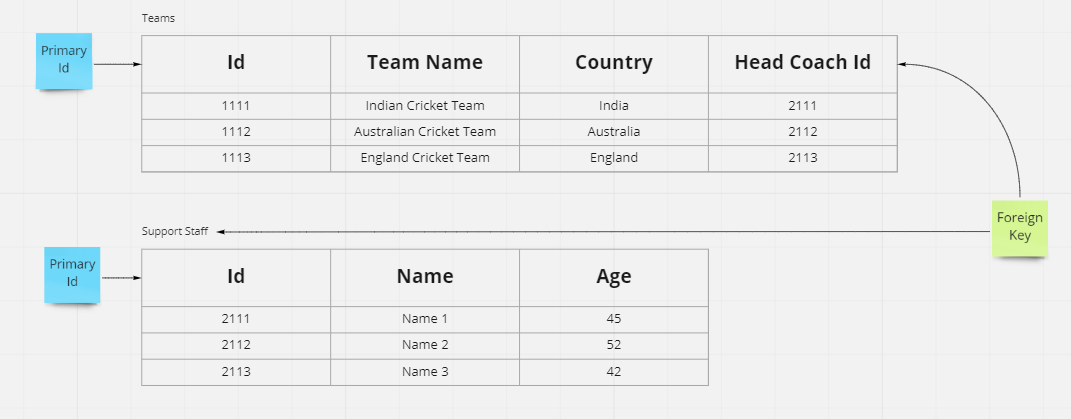
Creating support staff table
Let’s create a support staff table which will have the details of the support staff. We can have simple information about the staff and you can expand on the data if you need.
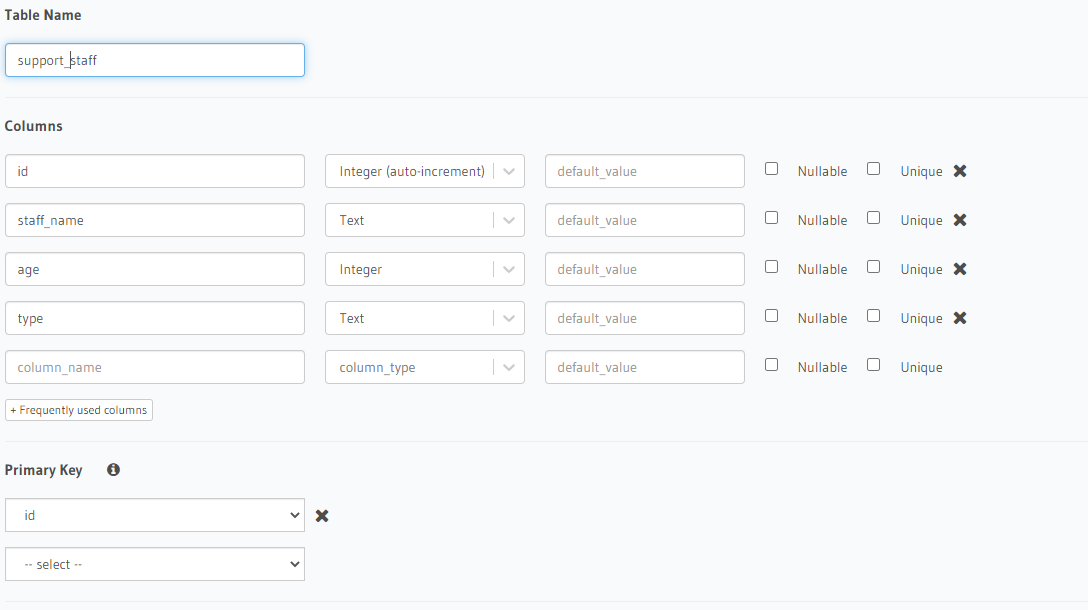
Linking the Teams table with support staff
Open the team table which we have created in the part 1 and add a new column as below
Column name: head_coach_id, Type: Text, Nullable: True
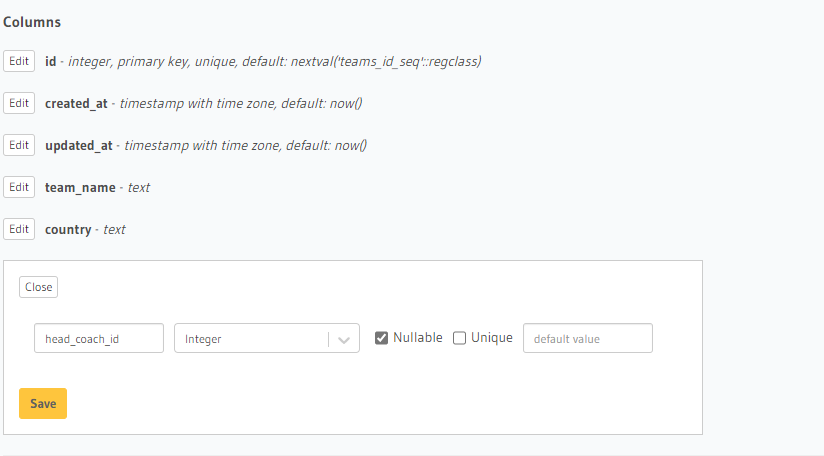
Once we have the new column, we need to add a Foreign key relationship to the SupportStaff table so that teams table knows that this column references the row in the other table.
Open the Modify tab and then move to the Foreign Keys section. You can add a new foreign key linking the other table id column in this place
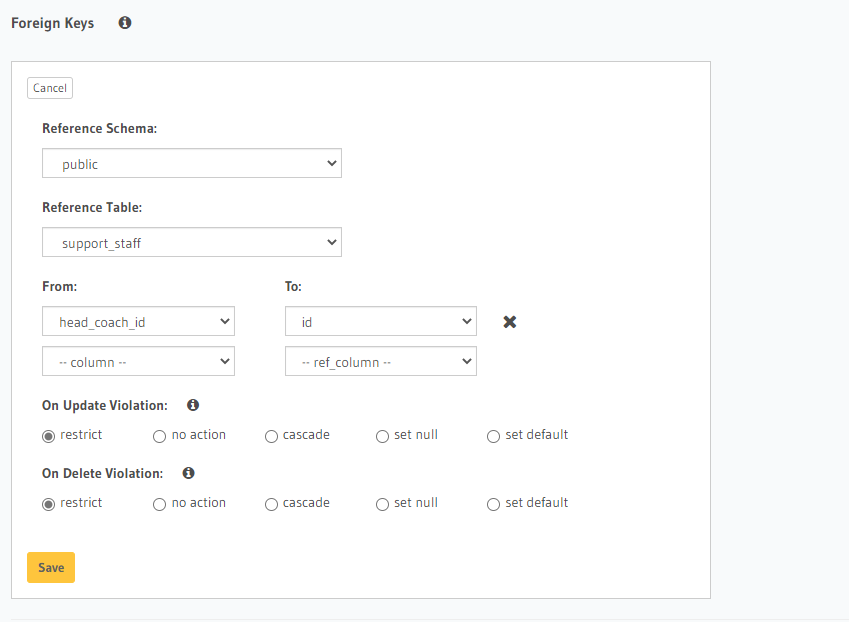
Update the relationship in Hasura
Once you have the foreign key relationship defined, we still have to create a relationship in Hasura GraphQL engine to make it easier to access the data inside the SupportStaff table
WHY ?
Right now once we insert the data into the SupportStaff table and then add that id in the team table and make a simple GraphQL query to get the data, It would be just the actual id of the head_coach which will be returned
query MyQuery {
teams {
team_name
head_coach_id
}
}
OUTPUT:
{
"data": {
"teams": [
{
"team_name": "Australia Cricket Team",
"head_coach_id": 2
},
{
"team_name": "Indian Cricket Team",
"head_coach_id": 1
},
{
"team_name": "England Cricket Team",
"head_coach_id": 3
}
]
}
}This is not so useful to the end user. When displaying the data, We might want to show the name of the coach instead of the id. So we can create a relationship in Hasura to make this simple when fetching data.
Open the Relationships tab in teams table and then you can see that Hasura will suggest a Object Relationships. Add the relationship and you can name it head_coach

Fetching the data
Once this is done you can now query for the head_coach name using the below GraphQL Query. Now the name which we gave in the relationship will be acting as a separate field and you can drill down into that field to find the data which is present in the other table. So in a single query you have the data from two separate tables and you can present this data easily in the UI of your app.
query MyQuery {
teams {
team_name
head_coach_id
head_coach {
staff_name
}
}
}
OUTPUT:
{
"data": {
"teams": [
{
"team_name": "Australia Cricket Team",
"head_coach_id": 2,
"head_coach": {
"staff_name": "Staff 2"
}
},
{
"team_name": "Indian Cricket Team",
"head_coach_id": 1,
"head_coach": {
"staff_name": "Staff 1"
}
},
{
"team_name": "England Cricket Team",
"head_coach_id": 3,
"head_coach": {
"staff_name": "Staff 3"
}
}
]
}
}Next Steps
Next we will add more support staff to the team to learn about one-to-many relationship and then we will start adding player data to the teams.
BUILD SPORTS TEAM API WITH GRAPHQL - HASURA - PART 3
Stay tuned by subscribing to our mailing list and joining our Discord community
